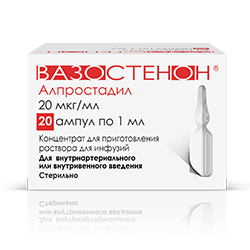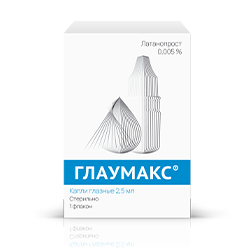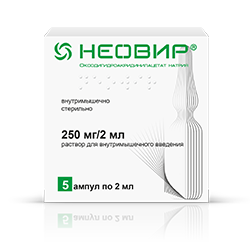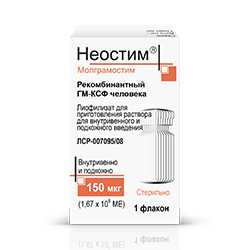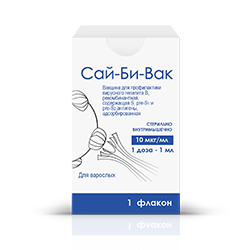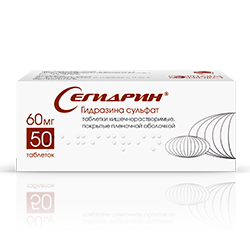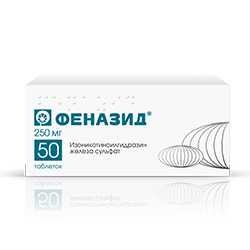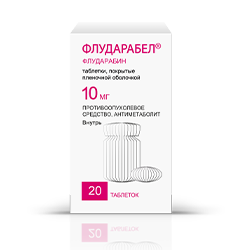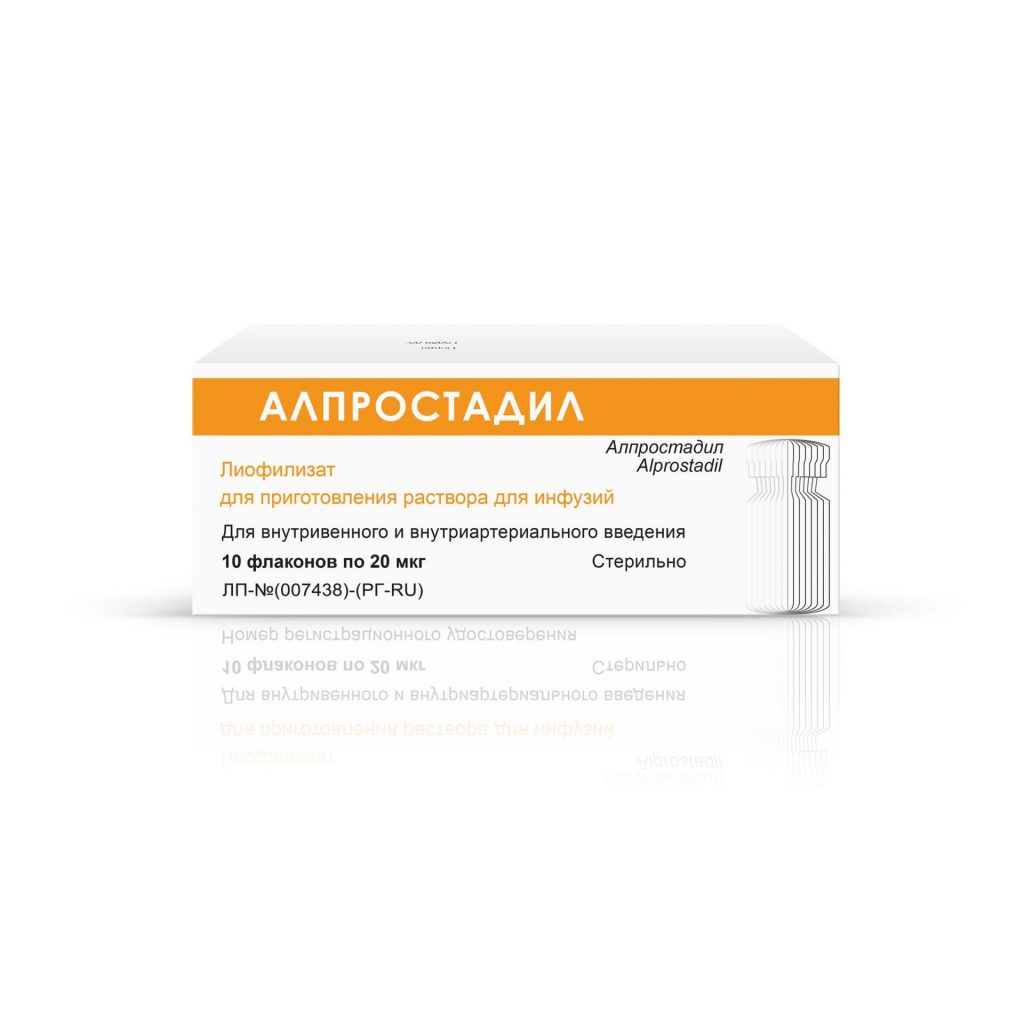Copyright © 2018
The Authors, some rights reserved; exclusive licensee American Association for the Advancement of Science. No claim to original U.S. Government Works. Distributed under a Creative Commons Attribution NonCommercial License 4.0 (CC BY-NC).
Alexey V. Stepanov1, Oleg V. Markov2, Ivan V. Chernikov2, Daniil V. Gladkikh2, Hongkai Zhang3,4, Teresa Jones3, Alexandra V. Sen’kova2, Elena L. Chernolovskaya2, Marina A. Zenkova2, Roman S. Kalinin1, Maria P. Rubtsova5, Alexander N. Meleshko6, Dmitry D. Genkin7, Alexey A. Belogurov Jr.1, Jia Xie3*, Alexander G. Gabibov1*, Richard A. Lerner3*
We report the development of a novel platform to enhance the efficacy and safety of follicular lymphoma (FL) treatment. Since lymphoma is a clonal malignancy of a diversity system, every tumor has a different antibody on its cell surface. Combinatorial autocrine-based selection is used to rapidly identify specific ligands for these B cell receptors on the surface of FL tumor cells. The selected ligands are used in a chimeric antigen receptor T cell (CAR-T) format for redirection of human cytotoxic T lymphocytes. Essentially, the format is the inverse of the usual CAR-T protocol. Instead of being a guide molecule, the antibody itself is the target. Thus, these studies raise the possibility of personalized treatment of lymphomas using a private antibody binding ligand that can be obtained in a few weeks.
INTRODUCTION
Although a special case, the B cell receptor (BCR) on lymphoma cells is the purest form of a tumor-specific antigen (1). This is because lymphoma is a tumor of one member of a diversity system where each tumor expresses only one of 108 different antibody molecules (2). Thus, it is remarkable that antigens selective for BCR binding have not been more generally used for therapy (3, 4). Probably, the reason is that the workflow to find a selective antigen for each patient is not possible in most therapeutic settings. Here, we describe an autocrine-based format that allows for identification of peptide antigens selective for individual BCRs with a speed compatible with their use in the clinic. These selected antigens can be used as guide molecules for chimeric antigen receptor T cell (CAR-T) therapy or other approaches such as radiotherapy. The main point is that autocrine-based selections allow for the speed and specificity that are required if personalized therapy of lymphoma is to be realized.
RESULTS
Overall workflow
The aim of these proof-of-concept experiments is to find an antigen that selectively reacts with the BCR on the surface of the lymphoma cell (Fig. 1). The central idea is that if the BCR can be cloned and expressed on the surface of indicator cells also expressing a very large array of peptides, the system becomes autocrine, and each cell becomes a selection system unto itself. If the overall system is constructed such that the BCR signals when it reacts with one of the coexpressed ligands, specific interactions between the BCR and the ligand can be readily identified by fluorescence-activated cell sorting (FACS). The autocrine-based selection, as used here, selects for functional interactions where antibody binding to the peptide on the CAR activates the system.

Fig. 1. Workflow for selection of ligands for the personalized FL–CAR-T therapy. A lymph node biopsy sample from a patient with FL is isolated, and the collected tumor cells are used for identification of the malignant BCR genes, after which they are reconstituted as a membrane-bound BCR using platelet-derived growth factor receptor (PDGFR) as a membrane anchor. The reconstituted malignant BCR, coexpressed with the cyclopeptide-CAR library on the surface of the Jurkat cell line, is used as a reporter-cell system for selection of the tumor cell–targeting ligand. Following several rounds of panning, the selected peptide ligands, fused to the CAR, are sequenced and may be immediately used for generation of the therapeutic T lymphocytes modified by tumor-specific CAR. VH, variable region of Ig heavy chain; VL, variable region of Ig light chain.
Identification of the BCRs on malignant B cells
We used lymph node biopsies from three patients with follicular lymphoma (FL) to determine the nucleotide sequence of the BCRs from malignant cells. The central part of the tumor biopsy was taken to reduce the abundance of BCR genes from nonmalignant cells. We used total mRNA as a template in a reverse transcription reaction with subsequent polymerase chain reaction (PCR) amplification of immunoglobulin (Ig) V genes. Up to 95% of analyzed sequences were identical owing to the clonal nature of lymphomas. The selected Ig variable regions were cloned into the pComb3X vector in a single-chain variable fragment (scFv) format (5). Thus, the scFv fused with constant domain of antibody (Fc) is linked via a flexible linker to a membrane-spanning domain of the PDGFR such that the antibody molecules are integrated as dimers into the plasma membrane, with their binding sites facing the solvent (fig. S1, B and C) (5).
Autocrine-based selection of a ligand for the BCR on malignant cells
We used an autocrine-based reporter system for direct selection of ligands that are specific to the BCR on malignant cells (Fig. 2A). The method allows for direct selection of a ligand that may be used for tumor targeting. We used T cells infected with both the BCR and combinatorial cyclopeptide library containing 109 members as the reporter system. We modified immortal Jurkat human T lymphocytes to simultaneously express the lymphoma BCR and a randomized seven–amino acid cyclopeptide library. The cyclopeptide library was fused with a CAR containing signaling domains (fig. S1, A and C). When the Ig fused with the PDGFR membrane-spanning domain reacts with a peptide from the cyclopeptide library, the signaling domains of the CAR trigger a T cell activation cascade. Activated T cells start to express CD69 (early T cell activation antigen), (6) and thus may be easily detected using specific fluorescent-labeled antibodies.

Fig. 2. Autocrine-based selection of malignant FL-BCR ligands. (A) The reporter system format. PMA, phorbol 12-myristate 13-acetate. TM, transmembrane. (B) Verification of the reporter cell system by Myc-CAR/anti-Myc antibody pair interaction. (C) Patient BCR-specific peptides on CAR activate reporter Jurkat cells transduced by membrane-tethered FL BCRs.
First, we confirmed the capacity of the reporter construction using a model system. We used a c-Myc epitope on CAR and the variable domains of the anti-Myc antibody (9E10 clone) as a model membrane-bound BCR. Jurkat cells expressing only membrane-bound anti-Myc antibody without coexpression of Myc-CAR showed no detectable activation. However, we activated cells containing both membrane-bound anti-Myc antibody and Myc-CAR (Fig. 2B).
The results from the Myc model system encouraged us to move forward to the actual BCR from the patient with lymphoma. To select peptide ligands of the reconstituted lymphoma BCRs, we performed several rounds of selection, resulting in the discovery of the three cyclopeptides CILDLPKFC (FL1), CMPHWQNHC (FL2), and CTTDQARKC (FL3) specific for three patient-derived BCR scFvs (fig. S2). Individual selected peptide-CAR fusions trigger a T cell activation cascade in Jurkat cells when cotransduced by corresponding membrane-tethered BCRs, as measured by CD69 membrane expression (Fig. 2C and fig. S3).
Specific lytic activity against lymphoma cells
We next tested whether T cells transduced with the FL1-CAR, FL2- CAR, and FL3-CAR constructs demonstrated killing activity in vitro when incubated with the Raji lymphoma cell lines transduced with the isolated FL-BCRs. We confirmed surface expression of the functional BCR from malignant cells by staining with a-Fc antibody and biotinylated FL1, FL2, and FL3 peptides (Fig. 3A). These studies confirmed that BCRs capable of binding to the peptides were present on these cells.
To determine whether cytotoxic T lymphocytes (CTLs) expressing CAR-Ts were capable of killing target cells, we used lentiviral vectors coding for FL1-CAR, FL2-CAR, FL3-CAR, or CD19-CAR to transduce human CD8+ T cells. Activated human CD8+ T cells bearing peptide-CAR lysed Raji cells expressing the corresponding BCRs from the lymphomas (Raji-FL1, Raji-FL2, and Raji-FL3), as measured by lactate dehydrogenase (LDH) release (Fig. 3B). Notably, the specific cytotoxicity of the FL1-CAR, FL2-CAR, and FL3-CAR cells was comparable to the best-studied CD19–CAR-T targeting CD19 antigen (FMC63-CAR). In contrast, we observed minimum lysis when we used control CAR-Ts. In addition, we observed no cell lysis in case of incubation of FL1-CAR, FL2-CAR, and FL3-CAR with unmodified Raji cells, suggesting the high therapeutic potential and safety of the BCR targeting CAR-Ts (fig. S4).
Next, we estimated the ex vivo cytotoxicity of FL1–CAR-Ts against cells from the patient 1 initial biopsy. More than 60% of cells in the biopsy sample are B cells specific to the FL1 peptide (Fig. 3C, bottom). Cells from a control biopsy sample derived from another patient with FL (patient 4) did not demonstrate any significant staining by the FL1 peptide. The CTL assay showed that FL1–CAR-Ts specifically lysed cells from the biopsy sample, while Myc–CAR-Ts and Mock T cells did not have any antitumor lytic activity (Fig. 3D).

Fig. 3. The selected peptide ligands specifically interact with the FL-BCRs and redirect CTLs to kill tumor cells. (A) Surface staining of Raji cells transduced with lymphoma BCR scFv by synthetic biotinylated peptides and antibody against IgG Fc. For IgG Fc staining, the same Raji cell population flow cytometry result was used as control in the three histograms. (B) FL–CAR-Ts were cocultured with Raji cells transduced with different lymphoma BCRs. Mock-transduced T cells and CD19–CAR-Ts were used as a comparison. Cytotoxicity was determined by measuring LDH release after 6 hours. (C) Cells from the patient’s biopsy or control B cells were stained with the synthetic biotinylated FL1 peptide. The B cell population was identified by a B220-specific antibody, and the FL1 peptide was labeled with biotin and detected with fluorescein isothiocyanate (FITC)–labeled streptavidin. (D) Lysis of B cells derived from the lymphoma biopsy sample by FL1–CAR-Ts compared to Myc–CAR-Ts and Mock-transduced T cells.
FL1-CAR–redirected CTLs suppress lymphoma cells in vivo
We tested the efficacy of FL1–CAR-Ts in a relevant model of FL using immune-deficient nonobese diabetic (NOD) severe combined immunodeficient (SCID; CB17-Prkdcscid/NcrCrl) mice engrafted with 5 × 106 Raji cells expressing the FL1-BCR (Raji-FL1; Fig. 4A). We used lentiviral vectors coding for FL1-CAR, Myc-CAR, or CD19-CAR to transduce CD3/CD28 bead-activated human CD8+ T cells, resulting in a high efficiency of gene transfer (Fig. 4B). Injection of 5 × 106 FL1–CAR-Ts or CD19–CAR-Ts significantly suppressed the tumor burden and improved survival in comparison with the control group treated with Myc–CAR-Ts (Fig. 4, C and D, and fig. S5). On the 37th day, 100% of the mice from the control Myc–CAR-T group were dead compared to 80% of alive animals in the FL1–CAR-T and CD19–CAR-T groups. We used flow cytometry to show that CAR-modified T cells persist in peripheral blood 21 days after infusion; FL1–CAR-Ts and CD19–CAR-Ts were present in significantly elevated amounts relative to Myc–CAR-Ts (Fig. 4D, inset). As expected, expansion of CD8+ CAR-expressing T cells was correlated with expression of surface markers associated with effector phenotypes (Fig. 4E). The population of FL1–CAR-Ts in peripheral blood generally consisted of an effector memory subset, while spleen and bone marrow were expanded by a central memory subset of cells (Fig. 4F). These later cells are thought to be important for persistence and sustained antitumor activity.

Fig. 4. CTLs redirected by FL1-CAR suppress lymphomagenesis in vivo. (A) Experimental design indicating the engraftment of NOD SCID mice with 5 × 106 Raji-FL1 cells. At day 15, animals (12 per group) were randomized according to the tumor volume and intravenously received 3 × 106 FL1–CAR-Ts, CD19–CAR-T, or Myc–CAR-Ts per mouse at day 17. (B) Transduction efficacy of activated, CD3/CD28 bead-expanded human CD8+ T cells with lentiviral-based vectors expressing FL1–CAR-T, Myc–CAR-T, and CD19–CAR-T constructs. Cells were stained with an IgG1-specific antibody or protein L. (C) Survival of Raji-FL xenografted mice treated on day 17 after tumor initiation with 3 × 106 CTLs (n = 12 mice per group). Overall survival curves were plotted using the Kaplan-Meier method and compared using the log-rank (Mantel-Cox) test (*P < 0.01).(D) Tumor growth curve in groups of mice (n = 12) treated with 3 × 106 FL1–CAR-Ts, CD19–CAR-Ts, or Myc–CAR-Ts administered intravenously on day 17 after injection of Raji-FL1 (**P < 0.05, unpaired t test). Absolute counts of adoptively transferred modified T cells were monitored in blood obtained from retro-orbital puncture using flow cytometry analysis with a CD3+-specific antibody (inset). (E) Flow cytometry analysis of the phenotype of FL1–CAR-Ts before injection and on day 21 following the injection. (F) Relative percentages of naive, central memory (CM), and effector memory (EM) CAR-Ts on day 21 following the injection.
DISCUSSION
As immunotherapy expands, we need a way to discover more tumor antigens and their specific ligands. At present, the “menu” of tumor antigens is limited (7–12). However, in the case of lymphomas, the tumor antigen is already present as the BCR. Moreover, the BCR is an antibody whose physiological role is to bind to antigen. This property of the BCR greatly simplifies the problem of searching for ligands that interact with the malignant BCR. Here, we used a “forced proximity” autocrine approach (13) in which each reporter cell coexpresses one member of a large peptide library on the cell surface together with the target BCR, where they are cointegrated into the membranes of a population of reporter cells. Several rounds of autocrine-based selection allow for discovery of a specific peptide ligand for the BCR. We demonstrated that T cells modified by these peptides fused with CAR eliminate tumor cells both ex vivo and in vivo as efficiently as the well-known CD19-targeted CAR.
One advantage of our approach to antigen selection is that after the rounds of panning, the selected peptide ligands are already in a construct where they are fused to the CAR. This allows one to immediately generate therapeutic T lymphocytes modified by tumor-specific CAR.
In essence, the format reported here is the opposite of the usual CAR-T protocol. Usually, in cells bearing the CAR-T, directionality is governed by an antibody, and the target is a surface peptide or protein of the tumor cell. Here, the inverse is used in that binding of the CAR-T is directed by the peptide, and the target is an antibody.
Moreover, since the antibody molecule is part of a huge diversity system, the target universe is basically unlimited. This large target universe greatly simplifies the problem of selecting ligands that are highly specific and tightly binding.
As more patients are studied, we may be able to use the selected peptide sequences to determine the proteins they are derived from and, by inference, the driving force for the malignant transformation. In this context, the discovered peptide is homologous to a region of myoferlin and identical to regions of surface proteins from Streptococcus mitis and Pneumocystis jirovecii (fig. S6). Given the suggestion that some lymphomas such as mucosa-associated lymphatic tissue are driven by sustained exposure to an infectious agent, we may learn about the driving force for generation of lymphoid malignancies as we unearth more antigens that bind to the BCR. Last, our ability to use sequences other than CD19 as targets not only expands the choice in a therapeutic setting but also may help when CD19 is absent or down-regulated, as may occur in many patients.
MATERIALS AND METHODS
Identification and reconstitution of lymphoma cell BCR Lymph node biopsies from patients with FL were provided by the N.N. Petrov Research Institute of Oncology (St. Petersburg, Russia). Immediately after surgery, the biopsy sample was separated into four equal slices, two of which were loaded into the RNAlater reagent (QIAGEN), and the others were cryopreserved. Lymphoma cell counts and expression of surface Ig were determined by flow cytometry. Cell suspension aliquots containing approximately 250,000 cells were stained with monoclonal antibodies in four tubes: (i) isotype control; (ii) CD45-FITC, CD20–PE (phycoerythrin), CD3-PC5, and CD19-PE-Cy7; (iii) IgG-PE-Cy5, IgM-FITC, and CD19-PECy7; and (iv) -FITC, -PE, and CD19-PE-Cy7. Immunoglobulin expression was estimated on lymphocytes as gated using SSC/FSC and CD19C. Monoclonal immunoglobulin expression of either M or G heavy chain and either or light chain was detected. The RNAlater-processed biopsy samples were used for isolation of the total mRNA usi ng an RNeasy Mini Kit (QIAGEN). Total complementary DNA was synthesized by reverse transcription using a QuantiTect Reverse Transcription Kit (QIAGEN). Variable region genes of heavy and light Ig chains identified by flow cytometry were amplified in separate reactions for each gene. Seminested PCR using high-fidelity DNA polymerase [Q5, New England Biolabs (NEB)] with a set of family-specific V gene forward primers and a C gene–specific reverse primer was used (table S1). First-step PCR products were subjected to heteroduplex analysis in polyacrylamide gel to discriminate homoduplexes (monoclonal PCR products) from a smear of slowly moving heteroduplexes (derived from polyclonal lymphocytes). DNA fragments of the expected size were extracted, and the DNA was eluted. A proximal C gene–specific reverse primer was used for the second-step amplification and sequencing. Identified variable fragments of the FL BCRs were cloned as an scFv into the lentiviral vector pLV2-Fc-MTA coding for a membrane-anchored human antibody Fc fragment (fig. S1, B and C; FL) (5). Jurkat and Raji cells were transduced with these viruses. Transduced Jurkat-FL and Raji-FL were analyzed by FACS to select the cells carrying the FL BCR, which were then used for autocrine selections or animal experiments.
Construction of a CAR-based combinatorial peptide library
The DNA fragment coding for the third-generation CAR-T was synthesized (GeneCust) and cloned into the pLV2 lentiviral vector (Clontech) under the control of the elongation factor 1a promoter. The arrangement of genes was in the following order: an interleukin 2 (IL-2) signal peptide at the N terminus, an IgG1 Fc spacer domain with modified PELLGG and ISR motifs, a GGGS linker, a CD28 transmembrane and intracellular region, and intracellular domains of the OX-40 and CD3zeta (fig. S1, A and C). To construct the combinatorial cyclopeptide library, randomized peptides in the format of CX7C (X = 20 natural amino acids) were appended to the N terminus of the Fc domain by PCR using oligonucleotides with degenerate NNK codons. The diversity of the generated library was estimated as 109 members. The lentiviral library of CX7C-Fc-CAR was prepared by cotransfection of human embryonic kidney (HEK) 293T cells with the library plasmid and the packaging plasmids. Supernatants containing virus were collected at 48 hours after transfection. The titer of lentivirus preparations was determined using Lenti-X p24 enzyme-linked immunosorbent assays (ELISAs; Clontech).
FACS-based sorting
Jurkat-FL1, Jurkat-FL2, and Jurkat-FL3 cells were transduced with the lentiviral cyclopeptide-CAR library. Two days after infection, CD69-positive cells were sorted using a FACSAria III (BD Biosciences). Peptide sequences were determined directly from sorted cells by PCR of the genes that encode them and were cloned into the lentiviral vector to construct libraries for the next round of selection. Four iterative rounds of selection were carried out.
Cells and culturing conditions
Cell lines were cultured in media supplemented with 10% fetal bovine serum (Gibco), 10 mM Hepes, penicillin (100 U/ml), streptomycin (100 g/ml), and 2 mM GlutaMAX (Gibco). The 293T lentiviral packaging cell line (Clontech) and HEp-2 cell line were cultured in Dulbecco’s modified Eagle’s medium (Gibco). Human HEp-2 (CCL-23), Jurkat (TIB-152), and Raji (CCL-86) cell lines were obtained from the Institute of Cytology RAS culture collection (St. Petersburg, Russia). The Jurkat, Jurkat-FL, Raji, and Raji-FL cell lines were cultured in RPMI 1640 (Gibco). Human peripheral blood mononuclear cells (PBMCs) were isolated from the blood of healthy donors by gradient density centrifugation on a Ficoll-Paque (GE Healthcare), washed, and then resuspended in serum-free RPMI 1640.
Surface plasmon resonance analysis
To obtain the soluble form of FL BCR as a full-size antibody, VH and VL were cloned into the pFUSE antibody expression vectors (InvivoGen) and produced using the FreeStyle 293 Expression System (Thermo Fisher Scientific). All measurements were made using a Biacore T200 apparatus (GE Healthcare Life Sciences). Biotinylated peptides were immobilized on SA chips following the manufacturer’s recommendations. The flow rate of HBS-EP buffer during all measurements was maintained at 25 l/min. A recombinant malignant BCR sample was serially diluted with HBS-EP buffer within the range of 0.0039 to 2 M and tested at a standard association/dissociation time of 300/300 s. The dissociation constants were calculated using the Biacore T200 1.0 evaluation software.
Enzyme-linked immunosorbent assays
The DNA fragments coding for the selected cyclopeptides FL1, FL2, and FL3 were synthesized (Evrogen) and cloned into the M13KE vector (NEB). Cloned cyclopeptides were amplified in the context of phages using electrocompetent ER2738 cells (NEB) following the manufacturer’s recommendations. ELISA was performed in MaxiSorp microtitration plates (Nunc, Roskilde, Denmark). The relative specificity of soluble FL1, FL2, and FL3 cyclopeptides in the context of phages was assessed against the rec onstituted lymphoma BCRs. Briefly, 96-well plates were coated with the soluble form (5 g/ml) of lymphoma BCRs (FL1 Ab, FL2 Ab, and FL3 Ab) in carbonate/bicarbonate buffer (pH 8.6) overnight at 4°C and were blocked with phosphate-buffered saline (PBS) containing 4% skimmed milk powder. Approximately 1010 virions per well of soluble FL1, FL2, and FL3 from the overnight cell culture were added, incubated for 2 hours at room temperature, and then washed three times with PBS with Tween 20. The bound FL1, FL2, and FL3 cyclopeptides fused with phages were detected by incubation with a 10,000-fold dilution of horseradish peroxidase (HRP)–conjugated anti-M13 antibody (#27-9421-01, GE Healthcare) for 1 hour at room temperature. After washing, 50 l of tetramethylbenzidine solution was added to each well, and the plate was placed in the dark for 5 to 15 min. The reaction was stopped by adding 50 l of 10% phosphoric acid per well. The results were evaluated by measuring OD450 (optical density at 450 nm) values in a Varioskan microplate reader (Thermo Fisher Scientific, Rochester, NY, USA).
CD8+ T cell activation, expansion, and transduction
A Dynabeads CD8 Positive Isolation Kit (Life Technologies) was used for isolation of CD8 T cells from human PBMCs. Human CD8 T cells were activated with CD3/CD28 beads at a 1:1 ratio (Life Technologies) in complete RPMI 1640 media containing recombinant IL-2 (40 IU/ml) for 72 hours. Activated T cells were resuspended at a concentration of 4 million cells per 3 ml of FL1-CAR, FL2-CAR, FL3-CAR, CD19-CAR, or Myc-Fc-CAR in lentiviral supernatant and 1 ml of fresh RPMI 1640 media with IL-2 (40 IU/ml) and cultured in six-well plates. Plates were centrifuged at 1200g for 90 min at 32°C and then incubated for 4 hours at 37°C. Second and third transductions were performed two more times.
Animal experiments
All animal procedures were carried out in strict accordance with the recommendations for the proper use and care of laboratory animals (ECC Directive 86/609/EEC). The protocol was approved by the Inter-Institute Bioethics Commission of the Siberian Branch of the Russian Academy of Sciences (SB RAS). The experiments were conducted in the Center for Genetic Resources of Laboratory Animals at the Institute of Cytology and Genetics, SB RAS. Six- to eight-weekold female NOD SCID (CB17-Prkdcscid/NcrCrl) mice with an average weight of 16 to 20 g were used. Tumors were engrafted by inoculating 5 × 106 Raji-FL1 cells in 200 l of 0.9% saline solution subcutaneously into the left side of mice. Once tumors had reached a palpable volume of at least 50 mm3, mice were randomly assigned to experimental or control groups. Tumor-bearing mice were injected intravenously with 3 × 106 FL1–CAR-Ts, CD19–CAR-Ts, or Myc–CAR-Ts on day 17 after tumor inoculation. Tumor volume was measured with calipers and estimated using the ellipsoidal formula. Animals were euthanized when the volume of the tumor node reached 2 cm3. On the 38th day after tumor inoculation (21st day after CAR-T infusion), animals from each experimental group were used for isolation of blood, spleen, and bone marrow cells. Erythrocytes were lysed with red blood cell lysis buffer (0.15 M NH4Cl, 10 mM NaHCO3, and 0.1 mM EDTA), and cells were stained with antibodies specific for CD3 (for blood samples), CD45RA, and CCR7 and analyzed by a NovoCyte flow cytometer (ACEA Biosciences). The tumors were fixed in 4% neutral buffered formaldehyde for 2 weeks and processed for paraffin sectioning using standard protocols.
Biophotonic tumor imaging
Animals were injected intraperitoneally with 150 l (4.29 mg per mouse) of a freshly thawed aqueous solution of d-luciferin potassium salt (GOLDBIO). After 10 min, animals were euthanized, and brain, lungs, heart, liver, spleen, kidneys, and tumors were collected. Each organ was rinsed with PBS, and bioluminescence intensity was visualized using an In-Vivo MS FX PRO Imaging System (Carestream).
Histology and immunohistochemistry
A macroscopic postmortem analysis included examination of the external surfaces, appearance of primary tumor nodes, thoracic condition, and abdominal and pelvic cavities with their associated organs and tissues. For further histological evaluation, specimens of tumor nodes from each animal were collected during autopsy and fixed in 10% neutral-buffered formalin, dehydrated in ascending ethanols and xylols, and embedded in HISTOMIX paraffin (BioVitrum). Paraffin sections (5 m) were stained with hematoxylin and eosin, microscopically examined, and scanned. Tumor sections for immunohistochemical studies (3 to 4 m) were sliced on a Microm HM 355S microtome (Thermo Fisher Scientific) and further deparaffinated and rehydrated; antigen retrieval was carried out after exposure in a microwave oven at 700 W. The samples were incubated with the CD8-specific antibodies (M3164, Spring Bioscience) according to the manufacturer’s protocol. Next, the sections were incubated with secondary HRP-conjugated antibodies (Spring Bioscience detection system), exposed to DAB (3, 3-diaminobenzidine) substrate, and stained with Mayer’s hematoxylin. Images were obtained using an Axiostar Plus microscope equipped with an Axiocam MRc5 digital camera (Zeiss, Germany) at 10×, 20×, and 40× magnifications. Gross examination of tumors included evaluation of size of the tumor node, presence of a capsule, and presence of necrosis and hemorrhages. Microscopic examination of tumors included evaluation of histopathological changes in tumor tissue in terms of necrosis and apoptosis, presence of mitoses, and presence of CD8 lymphocyte infiltration.
Statistics
The data obtained ex vivo (flow cytometry, cytotoxicity test) were statistically processed using the Student’s t test (two tailed, unpaired). The tumor volume measurements were statistically processed using one-way analysis of variance (ANOVA; STATISTICA 10.0). Survival curves were generated using the Kaplan-Meier method, and statistical comparisons were performed using the log-rank (Mantel-Cox) test. Significance was considered for P ≤ 0.05.
Cytotoxicity assays
The cytotoxicity and specificity of engineered T cells were evaluated in a standard LDH release assay (CytoTox 96 Non-Radioactive Cytotoxicity Assay, Promega) following the manufacturer’s recommendations. Mock-transduced T cells, CD19–CAR-Ts, FL1–CAR-Ts, FL2–CAR-Ts, FL3–CAR-Ts, or Myc–CAR-Ts were coincubated for 6 hours together with 104 of the Raji-FL1, Raji-FL2, Raji-FL3, or cells from the patient’s biopsy in complete RPMI 1640 media supplemented with human IL-2 (40 U/ml). As negative controls, we used Raji cells or cells isolated from an irrelevat lymphoma lymph node biopsy. All the experiments were performed in triplicate.
Flow cytometry analysis
The following antibodies were used in this study: anti-human CD3 FITC (BioLegend), anti-human CD8 PE (BioLegend), anti-human CCR7 PE (BioLegend), anti-human CD45RA FITC (BioLegend), mouse anti-human CD69 Alexa Fluor 488 (BioLegend), and anti-human B220 APC (antigen-presenting cell; BioLegend). Chimeric FL-BCR expression was detected using anti-human IgG1 PE antibody (SouthernBiotech) or synthetic biotinylated cyclopeptides (GeneCust) and streptavidin conjugated with FITC or PE (Thermo Fisher Scientific). The CAR molecules were detected using goat cross-absorbed anti-human IgG antibody conjugated with DyLight 650 (Thermo Fisher Scientific). The CD19-CAR (FMC63 clone) molecules were detected using biotinylated protein L (Thermo Fisher Scientific) and streptavidin conjugated with FITC (Thermo Fisher Scientific).
Identification of the B cell lymphoma 2 translocation
Crude DNA extracts were prepared by proteinase K digestion of an FL lymph node biopsy sample. PCR amplification was carried out using primer pairs comprising a consensus primer to JH and one of the three different primers homological to sequences in the mbr1, mcr2, or icr5 regions of the bcl2 gene as described in (14).
Immunofluorescence assay
Self-reactivity of the lymphoma BCR was tested by indirect immunofluorescence assay on HEp-2 and HEK293T cells as described in (15). Plasmid vector encoding recombinant myoferlin (22443, Addgene) was transfected into the HEK293T cells with Lipofectamine 2000 (Invitrogen) as per the manufacturer’s instructions. Recombinant Igs representing lymphoma BCR and irrelevant human antibody were diluted in PBS with 2% bovine serum albumin, used at a concentration of 50 g/ml, and incubated with cells for 1 hour. Detection of bound antibodies was accomplished by anti-human Ig-PE using a Nikon Eclipse Ti U microscope.
SUPPLEMENTARY MATERIALS
Supplementary material for this article is available at http://advances.sciencemag.org/cgi/content/full/4/11/eaau4580/DC1
Fig. S1. Structure of the reconstituted malignant BCR and combinatorial cyclopeptide library.
Fig. S2. Selected peptide ligands specifically interact with the malignant BCRs.
Fig. S3. Patient BCR-specific peptides on CAR activate reporter Jurkat cells transduced by membrane-tethered FL BCRs.
Fig. S4. FL–CAR-Ts do not eliminate Raji cells without exogenous lymphoma BCR.
Fig. S5. CTLs redirected by FL1-CAR infiltrate solid tumors and prevent xenograft metastasis.
Fig. S6. Malignant BCR recognizes self-antigen myoferlin.
Table S1. List of primers for amplification of variable region genes of heavy and light Ig chains.
REFERENCES AND NOTES
- B. S. Kahl, D. T. Yang, Follicular lymphoma: Evolving therapeutic strategies. Blood 127, 2055–2063 (2016).
- K. Basso, R. Dalla-Favera, Germinal centres and B cell lymphomagenesis. Nat. Rev. Immunol. 15, 172–184 (2015).
- J. O. Armitage, R. D. Gascoyne, M. A. Lunning, F. Cavalli, Non-Hodgkin lymphoma. Lancet 390, 298–310 (2017).
- V. Ribrag, S. Koscielny, J. Bosq, T. Leguay, O. Casasnovas, L.-M. Fornecker, C. Recher, H. Ghesquieres, F. Morschhauser, S. Girault, S. Le Gouill, M. Ojeda-Uribe, C. Mariette, J. Cornillon, G. Cartron, V. Verge, C. Chassagne-Clément, H. Dombret, B. Coiffier, T. Lamy, H. Tilly, G. Salles, Rituximab and dose-dense chemotherapy for adults with Burkitt’s lymphoma: A randomised, controlled, open-label, phase 3 trial. Lancet 387, 2402–2411 (2016).
- J. Xie, H. Zhang, K. Yea, R. A. Lerner, Autocrine signaling based selection of combinatorial antibodies that transdifferentiate human stem cells. Proc. Natl. Acad. Sci. U.S.A. 110, 8099–8104 (2013).
- R. Testi, J. H. Phillips, L. L. Lanier, T cell activation via Leu-23 (CD69). J. Immunol. 143, 1123–1128 (1989).
- E. R. Quinn, C. H. Chan, K. G. Hadlock, S. K. H. Foung, M. Flint, S. Levy, The B-cell receptor of a hepatitis C virus (HCV)–associated non-Hodgkin lymphoma binds the viral E2 envelope protein, implicating HCV in lymphomagenesis. Blood 98, 3745–3749 (2001).
- M. S. Khodadoust, N. Olsson, L. E. Wagar, O. A. Haabeth, B. Chen, K. Swaminathan, K. Rawson, C. L. Liu, D. Steiner, P. Lund, S. Rao, L. Zhang, C. Marceau, H. Stehr, A. M. Newman, D. K. Czerwinski, V. E. H. Carlton, M. Moorhead, M. Faham, H. E. Kohrt, J. Carette, M. R. Green, M. M. Davis, R. Levy, J. E. Elias, A. A. Alizadeh, Antigen presentation profiling reveals recognition of lymphoma immunoglobulin neoantigens. Nature 543, 723–727 (2017).
- R. J. Bende, W. M. Aarts, R. G. Riedl, D. de Jong, S. T. Pals, C. J. M. van Noesel, Among B cell non-Hodgkin’s lymphomas, MALT lymphomas express a unique antibody repertoire with frequent rheumatoid factor reactivity. J. Exp. Med. 201, 1229–1241 (2005).
- V. J. Craig, I. Arnold, C. Gerke, M. Q. Huynh, T. Wündisch, A. Neubauer, C. Renner, S. Falkow, A. Müller, Gastric MALT lymphoma B cells express polyreactive, somatically mutated immunoglobulins. Blood 115, 581–591 (2010).
- A. A. Warsame, H.-C. Aasheim, K. Nustad, G. Trøen, A. Tierens, V. Wang, U. Randen, H. P. Dong, S. Heim, A. Brech, J. Delabie, Splenic marginal zone lymphoma with VH1-02 gene rearrangement expresses poly- and self-reactive antibodies with similar reactivity. Blood 118, 3331–3339 (2011).
- C. C. Chu, R. Catera, K. Hatzi, X.-J. Yan, L. Zhang, X. B. Wang, H. M. Fales, S. L. Allen, J. E. Kolitz, K. R. Rai, N. Chiorazzi, Chronic lymphocytic leukemia antibodies with a common stereotypic rearrangement recognize nonmuscle myosin heavy chain IIA. Blood 112, 5122–5129 (2008).
- H. Zhang, E. Sturchler, J. Zhu, A. Nieto, P. A. Cistrone, J. Xie, L. He, K. Yea, T. Jones, R. Turn, P. S. Di Stefano, P. R. Griffin, P. E. Dawson, P. H. McDonald, R. A. Lerner, Autocrine selection of a GLP-1R G-protein biased agonist with potent antidiabetic effects. Nat. Commun. 6, 8918 (2015).
- C. C. Yin, R. Luthra, Molecular detection of t(14;18)(q32;q21) in follicular lymphoma. Methods Mol. Biol. 999, 203–209 (2013).
- K. L. Sachen, M. J. Strohman, J. Singletary, A. A. Alizadeh, N. H. Kattah, C. Lossos, E. D. Mellins, S. Levy, R. Levy, Self-antigen recognition by follicular lymphoma B-cell receptors. Blood 120, 4182–4190 (2012).
Acknowledgments: We thank V. Shipunova, A. Rybinets, and M. Dronina for technical assistance and interpretation of results. Funding: This study was supported by Russian Scientific Foundation project no. 17-74-30019. Author contributions: A.G.G., J.X., and R.A.L. conceived the study. A.V.S., A.A.B., J.X., A.G.G., and R.A.L. wrote the manuscript. A.V.S., O.V.M., I.V.C., D.V.G., E.L.C., M.A.Z., D.D.G., A.A.B., J.X., A.G.G., and R.A.L. planned the experiments and interpreted the results. A.V.S., O.V.M., I.V.C., D.V.G., A.V.Se., E.L.C., and M.A.Z. designed and executed the animal work described. A.V.S., O.V.M., I.V.C., D.V.G., H.Z., T.J., A.V.Se., R.S.K., M.P.R., A.N.M., A.A.B., and J.X. carried out the experiments. Competing interests: A.V.S., D.V.G., A.G.G., R.A.L., A.A.B., and J.X. are inventors on a patent application related to this work (no. PCT/RU2018/000653, filed 4 October 2018). The authors declare that they have no other competing interests. Data and materials availability: All data needed to evaluate the conclusions in the paper are present in the paper and/or the Supplementary Materials.
Additional data related to this paper may be requested from the authors.
Submitted 12 June 2018
Accepted 12 October 2018
Published 14 November 2018
10.1126/sciadv.aau4580
Citation: A. V. Stepanov, O. V. Markov, I. V. Chernikov, D. V. Gladkikh, H. Zhang, T. Jones, A. V. Sen’kova, E. L. Chernolovskaya, M. A. Zenkova, R. S. Kalinin, M. P. Rubtsova, A. N. Meleshko, D. D. Genkin, A. A. Belogurov Jr., J. Xie, A. G. Gabibov, R. A. Lerner, Autocrine-based selection of ligands for personalized CAR-T therapy of lymphoma. Sci. Adv. 4, eaau4580 (2018).
1Shemyakin-Ovchinnikov Institute of Bioorganic Chemistry, Russian Academy of Sciences, ul. Miklukho‐Maklaya 16/10, 117997 Moscow V-437, Russian Federation.
2Institute of Chemical Biology and Fundamental Medicine, Siberian Branch of the Russian Academy of Sciences, Lavrentiev Ave. 8, 630090 Novosibirsk, Russian Federation.
3 Department of Chemistry, The Scripps Research Institute, 10550 North Torrey Pines Road MB-10, La Jolla, CA 92037, USA.
4 State Key Laboratory of Medicinal Chemical Biology, Nankai University, 38 Tongyan Road, Tianjin 300350, China.
5 Chemistry Department, M.V. Lomonosov Moscow State University, Lenin Hills, 1, bld. 3, 119991 Moscow, Russian Federation.
6 Belarusian Research Center for Pediatric Oncology, Hematology and Immunology, Minsk, Belarus.
7 OJSC Pharmsynthez,197110 St. Petersburg, Russian Federation.
*Corresponding author. Email: jiaxie@scripps.edu (J.X.); gabibov@mx.ibch.ru (A.G.G.); rlerner@scripps.edu (R.A.L.)


